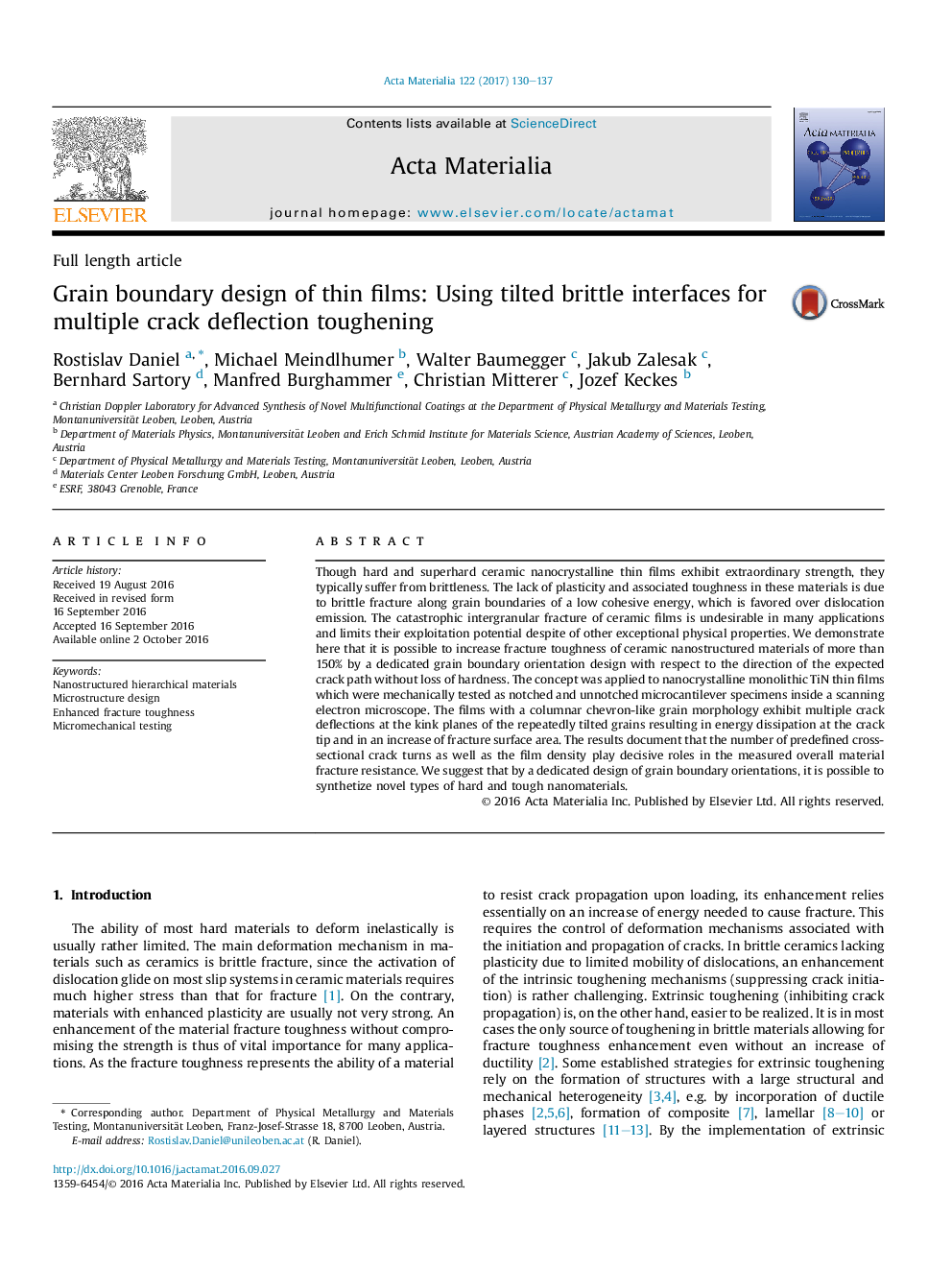| Article ID | Journal | Published Year | Pages | File Type |
|---|---|---|---|---|
| 5436500 | Acta Materialia | 2017 | 8 Pages |
Though hard and superhard ceramic nanocrystalline thin films exhibit extraordinary strength, they typically suffer from brittleness. The lack of plasticity and associated toughness in these materials is due to brittle fracture along grain boundaries of a low cohesive energy, which is favored over dislocation emission. The catastrophic intergranular fracture of ceramic films is undesirable in many applications and limits their exploitation potential despite of other exceptional physical properties. We demonstrate here that it is possible to increase fracture toughness of ceramic nanostructured materials of more than 150% by a dedicated grain boundary orientation design with respect to the direction of the expected crack path without loss of hardness. The concept was applied to nanocrystalline monolithic TiN thin films which were mechanically tested as notched and unnotched microcantilever specimens inside a scanning electron microscope. The films with a columnar chevron-like grain morphology exhibit multiple crack deflections at the kink planes of the repeatedly tilted grains resulting in energy dissipation at the crack tip and in an increase of fracture surface area. The results document that the number of predefined cross-sectional crack turns as well as the film density play decisive roles in the measured overall material fracture resistance. We suggest that by a dedicated design of grain boundary orientations, it is possible to synthetize novel types of hard and tough nanomaterials.
Graphical abstractDownload high-res image (341KB)Download full-size image
